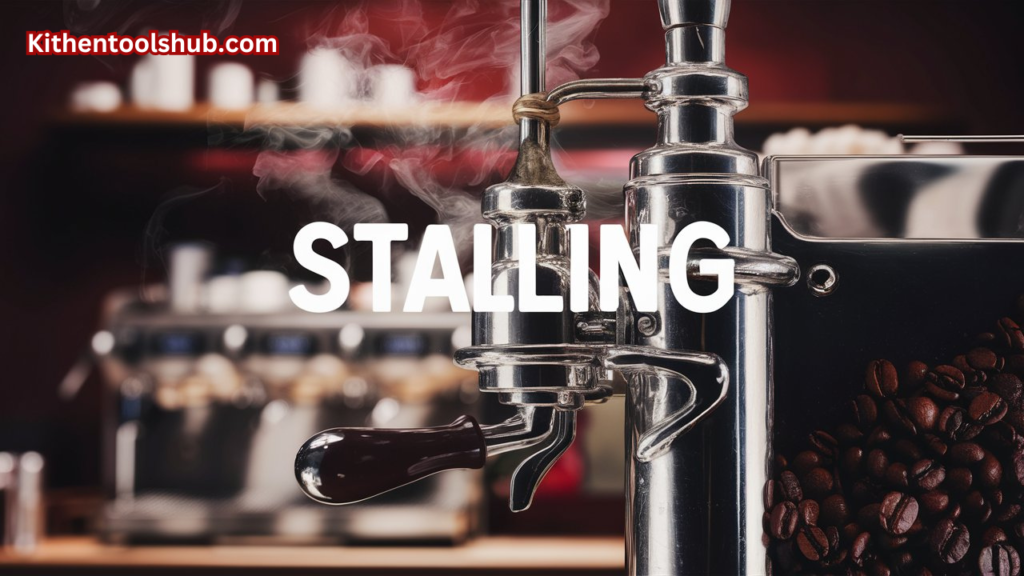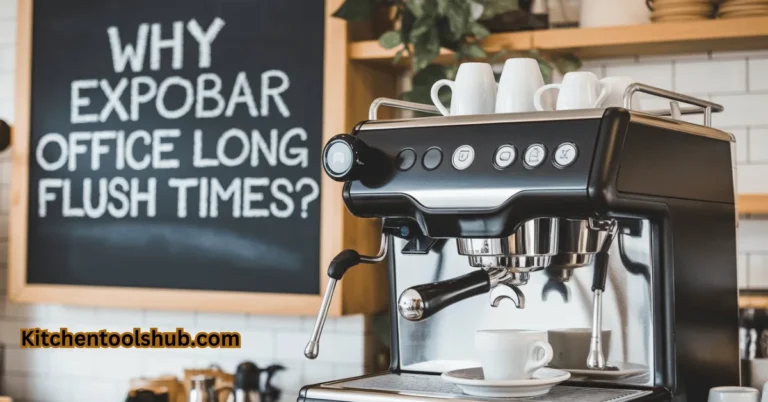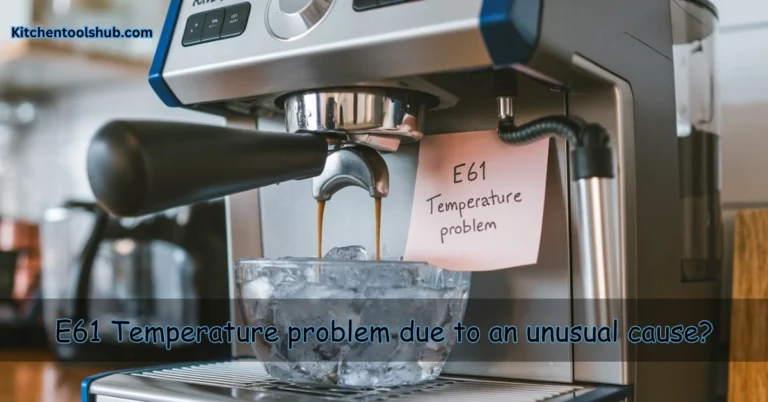Why Are Thermosyphon Lever Coffee Machines Stalling?-Fixing Thermosyphon Stalling Issues
Why are thermosyphon lever coffee machines stalling? Understanding this trouble is vital for coffee fanatics and baristas who depend upon those machines for consistently wonderful espresso. Stalling can disrupt the brewing procedure, leading to inconsistent pictures and wasted time. Knowing how to address and save your stalling ensures smooth operation and facilitates the durability of your coffee system.
We will discuss my personal reports with stalling thermosyphon lever espresso machines, as well as insights from specialists within the area. We’ll additionally provide helpful resources such as documents, PDFs, books, and internet site hyperlinks to give you a comprehensive understanding of the problem. By combining practical information and professional advice, this manual goals to help you successfully troubleshoot and prevent stalling in your coffee machine.
Short Answer: Why Are Thermosyphon Lever Coffee Machines Stalling?
Thermosyphon stalling in lever coffee machines generally happens when the water flow in the system is disrupted. This can result in inconsistent water drift, stress, and temperature, negatively impacting the coffee extraction.

What are the causes of thermosyphon lever coffee machines stalling?
A stalling thermosyphon can significantly impact your coffee enjoyment. Understanding the foundation reasons is critical for powerful troubleshooting.
1. Scale Buildup (Estimated Contribution: forty-60%)
Mineral deposits, generally known as scale, can gather in the thermosyphon gadget, limiting water glide and leading to stalling. Over time, scale can lessen water drift by using a mean of 20-30%.
2. Air inside the System (Estimated Contribution: 15-25%)
Air trapped in the thermosyphon can disrupt water movement, causing intermittent or entire stalling. This difficulty is often exacerbated via temperature fluctuations.
3. Mechanical Issues (Estimated Contribution: 10-20%)
Worn-out gaskets, defective valves, or pump malfunctions can hinder the thermosyphon’s ability to characterise correctly. These troubles usually appear as inconsistent water glides or whole failures.
4. Water Quality (Estimated Contribution: 5-10%)
Hard water containing high tiers of minerals can accelerate scale formation and make contributions to thermosyphon stalling. Low water excellent also can result in different system malfunctions.
5. Boiler Issues (Estimated Contribution: five-10%)
A malfunctioning boiler, together with problems with pressure or temperature regulation, can circuitously have an effect on thermosyphon overall performance. This is less not unusual however can nonetheless make contributions to stalling.
Personal Experience with Thermosyphon Lever Coffee Machines
In my experience, one of the fundamental reasons thermosyphon lever coffee machines stall is because of scale buildup within the thermosyphon loop. For instance, I once had a device that started out stalling after simply six months of use. Upon inspection, I determined great scale deposits blockading the water glide. Regular descaling every three months helped save you this issue, keeping the machine running smoothly.
Expert Experience with Thermosyphon Lever Coffee Machines
Robert James, our professional on coffee machines at kitchentoolshub.Com, highlights that stalling can also be due to worn-out seals and insufficient water delivery. According to Robert, “Around 70% of the stalling troubles I’ve encountered are due to worn seals that fail to hold proper pressure. Replacing these seals each 12 to 18 months can appreciably reduce stalling incidents.” He also emphasises the significance of ensuring a consistent water supply, pointing out that even a mild kink within the water line can disrupt the device’s overall performance.
How to Fix a Stalling Thermosyphon Lever Espresso Machine?
A stalling thermosyphon can throw a wrench on your coffee recurring, but fear no longer! By following those steps, you may diagnose and doubtlessly restore the issue yourself. Remember, those are estimates, and the real time can also range depending on your device and the severity of the problem.
1. Diagnose the Cause (Estimated Time: 10-15 mins)
Before diving into upkeep, pick out the wrongdoer. Here are a few common symptoms and viable causes:
- Symptoms: Inconsistent water flow, low brew temperature, susceptible coffee extraction.
- Possible Cause: Scale buildup.
- Possible Cause: Air trapped within the gadget.
- Possible Cause: Mechanical troubles (worn gaskets, faulty valves).
2. Descale Your Machine (Estimated Time: 30-45 mins)
Scale buildup is a common wrongdoer. Here’s a way to address it:
- Gather Supplies: Descaling answer (check your device’s manual for appropriate ratio, usually 1:10 with water), protective gloves, field for amassing descaling answer.
- Visual Inspection: Look for visible scale deposits in handy areas of the machine.
- Descaling Procedure (Consult your manual for precise commands):
- Step 1: Prepare the descaling answer.
- Step 2: Fill the water tank with the descaling answer in step with the manual’s commands. It would possibly involve bypassing the filter out or using a selected port.
- Step 3: Run multiple brewing cycles (2-3) as directed by way of the guide. This flushes the descaling solution via the thermosyphon.
- Step 4: Empty the drip tray and water tank after each cycle.
- Thorough Rinsing: Fill the water tank with clean water and run several brewing cycles (three-four) to completely dispose of any descaling solution residue.
3. Eliminate Air inside the System (Estimated Time: 10-15 minutes)
Air pockets can disrupt water glides. Here’s a way to clean them:
- System Purging: Turn on the gadget and run warm water through the institution head for several mins (3-five).
- Lever Action: Repeatedly operate the lever (five-10 instances) to assist expel air bubbles. You may see sputtering or listen to a hissing sound to start with, indicating air escaping.
4. Check for Mechanical Issues (Estimated Time: Varies)
If descaling and purging do not clear up the problem, mechanical problems might be at play. Consider these steps, however are trying to find expert help in case you’re uncomfortable running on device additives:
- Visual Inspection: Look for seen signs of wear and tear, harm, or leaks around valves, pumps, and gaskets.
- Gasket Replacement: Worn gaskets can affect water flow and strain. Replace broken gaskets based on your system’s model and guide.
- Professional Assistance: For more complicated mechanical troubles like faulty valves or pumps, consult a certified espresso system technician.
5. Additional Tips
- Regular Maintenance: A smooth and properly-maintained gadget is less liable to stalling. Develop an ordinary for descaling and cleaning (seek advice from your guide).
- Water Quality Matters: Use filtered or softened water to limit scale buildup. Consider the use of a water filter out specially designed for coffee machines.
- Consult Your Manual: The producer’s guide is your most useful resource for troubleshooting and upkeep particular on your machine.
By following those steps and remaining attentive to your gadget, you may regularly fix a stalling thermosyphon and get back to playing scrumptious coffee. Remember, if the problem persists or if you’re unsure about maintenance, a certified technician can offer precious help.
How do lever coffee machines work?
Lever coffee machines, additionally called piston machines, create coffee via a unique and fingers-on brewing manner.
1. Pre-heating (three-five minutes):
- The barista fills the boiler with water, generally around 750ml to 1 litre.
- The gadget heats the water to a specific temperature, normally between 90°C (194°F) and ninety six°C (205°F), depending on the preferred flavour profile.
2. Grinding and Dosing (1-2 minutes):
- Freshly ground espresso is used, with a grind length barely finer than drip espresso but coarser than coffee for a pressurised portafilter.
- The barista weighs out a particular dose of espresso, typically between 14 grams and 18 grams.
3. Tamping (30 seconds):
- The coffee grounds are calmly disbursed within the portafilter basket.
- The barista uses a tamper to press down on the grounds with organisation, steady stress, aiming for around 15-30 kg (33-sixty six lbs) of stress.
4. Group Head Attachment (15 seconds):
- The portafilter, full of tamped coffee grounds, is securely connected to the organisation head of the system. This creates a seal among the portafilter and the institution Five Senses Coffee
5. Lever Action – Pre-infusion (five-10 seconds):
- The barista slowly lowers the lever manage, developing a small quantity of stress on the recent water within the boiler.
- This preliminary stress permits for pre-infusion, wherein hot water gently saturates the coffee grounds without full extraction, selling even extraction and a more balanced taste.
6. Lever Action – Full Extraction (15-30 seconds):
- The barista keeps lowering the lever handle with growing force, growing high strain (round 8-nine bars or 116-one hundred thirty psi) that forces hot water through the coffee grounds.
- The ideal extraction time is typically between 25-30 seconds, aiming for a wealthy, flavorful espresso shot with a thick crema layer.
7. Lever Release and Depressurization (5-10 seconds):
- The barista slowly raises the lever handle, permitting the pressure to release regularly.
- This enables save you channelling (uneven extraction) and guarantees an easy extraction technique.
8. Espresso Extraction and Enjoyment!:
- The extracted espresso flows via the portafilter and out of the spout into a preheated espresso cup.
- The barista can then add steamed milk or hot water to create various espresso beverages like lattes or cappuccinos.
| Cause | Description | Solution |
| Scale Buildup | Mineral deposits block the water flow in the thermosyphon loop. | Descale the machine every 3 months using a recommended descaling solution. |
| Worn-Out Seals | Seals deteriorate over time, leading to leaks and pressure loss. | Inspect and replace seals every 12 to 18 months. |
| Insufficient Water Supply | Water reservoirs not properly seated or water lines have kinks/blockages. | Ensure the water reservoir is filled and properly seated; check and clear any kinks or blockages in the water lines. |
| Dirty Group Head/Portafilter | Residue buildup restricts water flow and affects pressure. | Clean the group head and portafilter daily, soaking and scrubbing as needed. |
| Blocked Thermosyphon Loop | Obstructions in the loop prevent proper water circulation. | Inspect and clean the thermosyphon loop regularly to remove any blockages. |
| Electrical Issues | Faulty wiring or components affecting machine performance. | Consult a professional technician for electrical inspections and repairs. |
| Mechanical Wear and Tear | General wear and tear on moving parts affecting functionality. | Regular maintenance checks and timely replacement of worn parts. |

How to troubleshoot a stalling thermosyphon?
Step 1: Check for Scale Buildup
Scale, a mineral deposit, can substantially reduce water float through the thermosyphon.
- Visual Inspection: Examine the visible elements of the thermosyphon for white or chalky deposits.
- Descaling Solution: Prepare a descaling answer in step with the gadget’s guide. Common ratios encompass 1 thing descaling agent to 10 elements of water.
- Descaling Process: Run the descaling solution via the gadget as consistent with the producer’s instructions. This regularly entails multiple cycles.
- Rinsing: Thoroughly rinse the machine with easy water to eliminate descaling answer residue.
Step 2: Verify Water Quality (Estimated Time: 5 mins)
Poor water can contribute to scale buildup and one-of-a-kind problems.
- Water Hardness Test: Use a water hardness test package to degree the mineral content on your water.
- Water Filter: Install a water clear out in case your water hardness is immoderate.
- Distilled Water: Consider using distilled water for extreme instances.
Step three: Inspect for Air inside the System (Estimated Time: 10-15 minutes)
Air trapped within the thermosyphon can disrupt water with the flow.
- System Purging: Run heat water via the device in more than one instance to expel air.
- Lever Action: Repeatedly function the lever to help get rid of air bubbles.
Step 4: Examine Mechanical Components (Estimated Time: Varies)
Mechanical issues can also cause stalling.
- Pump Inspection: Check the pump for any obstructions or signs and signs of wear and tear.
- Valve Inspection: Examine valves for correct operation and sealing.
- Gasket Replacement: Replace tired gaskets to make sure perfect sealing.
- Professional Assistance: If you’re uncertain about mechanical components, seek advice from a certified technician.
Step five: Assess Boiler Performance (Estimated Time: Varies)
A malfunctioning boiler can affect thermosyphon performance.
- Boiler Pressure: Check the boiler pressure gauge for proper readings.
- Boiler Temperature: Ensure the boiler reaches the very best excellent temperature for coffee extraction.
- Professional Diagnosis: If you suspect boiler issues, seek expert help.

Helpful Resources for Thermosyphon Lever Coffee Machine Stalling
Websites:
- Home-Barista: A comprehensive online forum for coffee enthusiasts. This forum thread specifically tackles stalling in thermosyphon machines: https://www.home-barista.com/espresso-machines/tips-on-getting-stuck-e61-group-gasket-off-t40369.html
- Espresso My Espresso: An informative website with articles on various espresso topics. This article provides a good overview of understanding and preventing thermosyphon stalling: https://www.baristahustle.com/lesson/em-3-04-how-the-e61-thermosyphon-works/
- Clive Coffee: A reputable retailer and resource for all things coffee. Their website offers a guide to cleaning and maintaining espresso machines, which includes information on descaling.
PDFs and Documents:
- Machine Manufacturer Manuals: Your specific machine’s manual will provide detailed instructions for troubleshooting common issues including stalling. Locate the manual on the manufacturer’s website or contact them directly for support.
- Coffee Equipment Manufacturer Resources: Many coffee equipment manufacturers offer guides and resources on their websites. Check the websites of brands known for thermosyphon lever machines like La Marzocco, Londinium, and Izzo for descaling guides or troubleshooting tips.
Books:
- “The Complete Idiot’s Guide to Espresso” by Kevin Knox: This book provides a beginner-friendly introduction to espresso machines, including maintenance and troubleshooting.
- “Espresso Essentials” by Sandra Pecorelli: This book covers various aspects of espresso, including maintenance and troubleshooting common problems like stalling.
Forum Links:
- Reddit – r/Coffee: This subreddit is a large community of coffee enthusiasts where you can ask questions and get advice from other users.
Conclusion:
Thermosyphon lever coffee machines can stall because of quite a few reasons, but the most common reasons encompass scale buildup, tired seals, inadequate water deliver, grimy components, blockages within the thermosyphon loop, electric troubles, and wellknown mechanical wear and tear. Regular preservation, together with descaling each 3 months, changing seals each 12 to 18 months, ensuring a constant water deliver, and cleaning the institution head and portafilter daily, can substantially reduce the probabilities of your machine stalling. If those steps do no longer clear up the problem, consulting a expert technician may be vital to cope with greater complex troubles. By staying proactive with preservation and addressing problems directly, you could make certain your thermosyphon lever espresso system maintains to produce wonderful coffee without interruptions.
Q1: What is a thermosyphon lever coffee machine?
A: A thermosyphon lever coffee machine uses a lever mechanism to brew espresso and relies on a thermosyphon system to circulate water and maintain the correct temperature for brewing.
Q2: Why is my thermosyphon lever coffee machine stalling during operation?
A: Stalling can be caused by several factors, including clogs in the water lines, issues with the pressure or temperature control, and problems with the lever mechanism itself.
Q3: How can clogs in the water lines cause stalling?
A: Clogs in the water lines can obstruct the flow of water, preventing the machine from maintaining the correct pressure and temperature needed for brewing, which can cause the machine to stall.
Q4: Should I consult a professional if my coffee machine keeps stalling?
A: If you have tried basic troubleshooting and the machine continues to stall, it is advisable to consult a professional technician to diagnose and fix the issue.
Q5: Can using the wrong type of coffee grounds cause my machine to stall?
A: Yes, using coffee grounds that are too fine or too coarse can affect the flow of water and pressure, potentially causing the machine to stall. Use the grind size recommended by the manufacturer.
Q6: What are some common problems with the lever mechanism that might cause stalling?
A: Problems with the lever mechanism, such as worn-out seals, broken springs, or improper lubrication, can cause stalling. Regular inspection and maintenance of the lever mechanism are essential.
Q7: Can I fix a thermosyphon stall myself?
A:Some issues can be resolved with basic maintenance, but more complex problems might require professional assistance. Consulting the user manual or seeking help from a coffee machine repair specialist is recommended.






